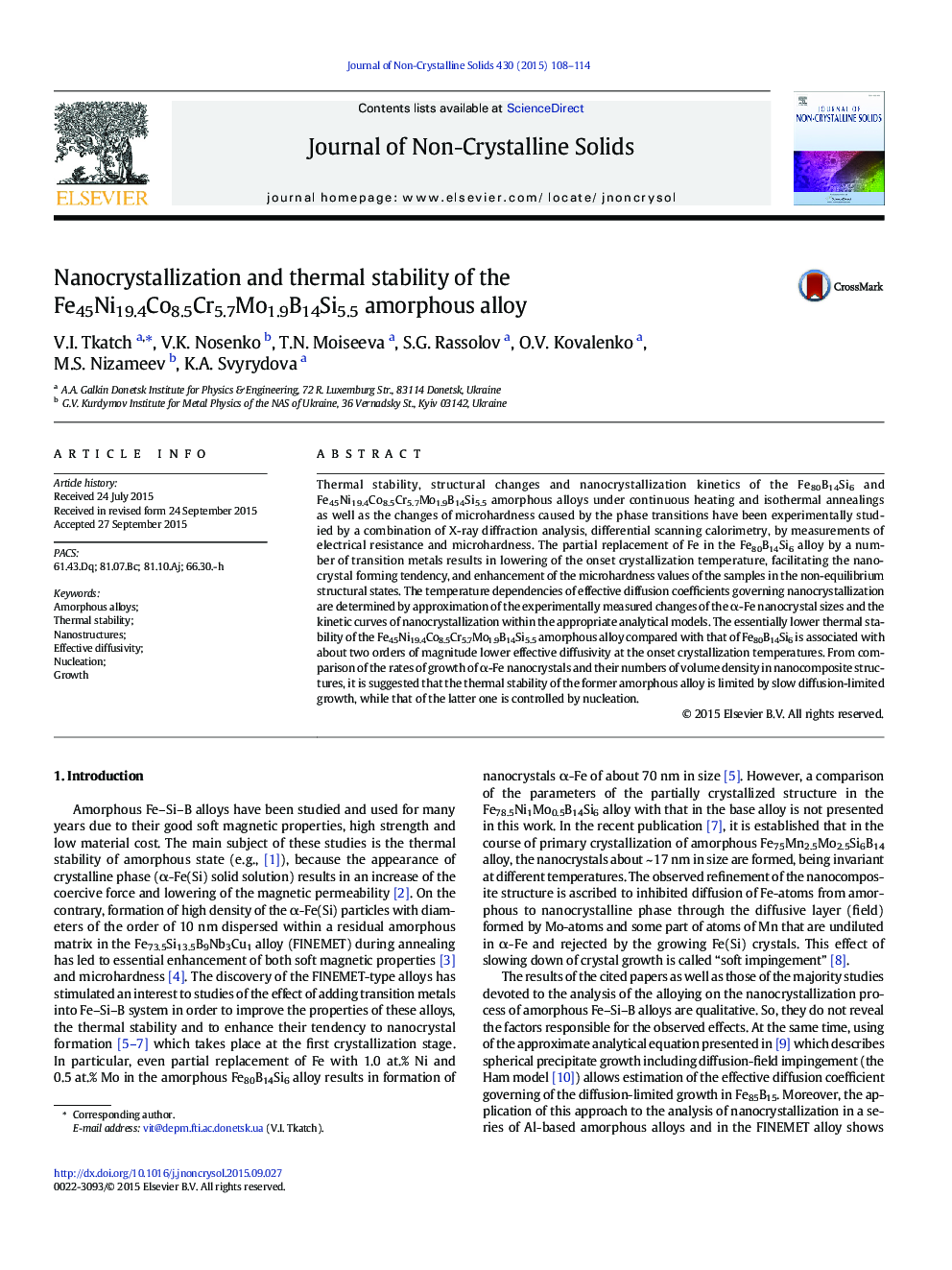| Article ID | Journal | Published Year | Pages | File Type |
|---|---|---|---|---|
| 1480475 | Journal of Non-Crystalline Solids | 2015 | 7 Pages |
Abstract
Thermal stability, structural changes and nanocrystallization kinetics of the Fe80B14Si6 and Fe45Ni19.4Co8.5Cr5.7Ðо1.9B14Si5.5 amorphous alloys under continuous heating and isothermal annealings as well as the changes of microhardness caused by the phase transitions have been experimentally studied by a combination of X-ray diffraction analysis, differential scanning calorimetry, by measurements of electrical resistance and microhardness. The partial replacement of Fe in the Fe80B14Si6 alloy by a number of transition metals results in lowering of the onset crystallization temperature, facilitating the nanocrystal forming tendency, and enhancement of the microhardness values of the samples in the non-equilibrium structural states. The temperature dependencies of effective diffusion coefficients governing nanocrystallization are determined by approximation of the experimentally measured changes of the α-Fe nanocrystal sizes and the kinetic curves of nanocrystallization within the appropriate analytical models. The essentially lower thermal stability of the Fe45Ni19.4Co8.5Cr5.7Ðо1.9B14Si5.5 amorphous alloy compared with that of Fe80B14Si6 is associated with about two orders of magnitude lower effective diffusivity at the onset crystallization temperatures. From comparison of the rates of growth of α-Fe nanocrystals and their numbers of volume density in nanocomposite structures, it is suggested that the thermal stability of the former amorphous alloy is limited by slow diffusion-limited growth, while that of the latter one is controlled by nucleation.
Keywords
Related Topics
Physical Sciences and Engineering
Materials Science
Ceramics and Composites
Authors
V.I. Tkatch, V.K. Nosenko, T.N. Moiseeva, S.G. Rassolov, O.V. Kovalenko, M.S. Nizameev, K.A. Svyrydova,
